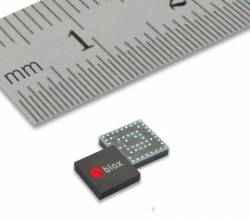
L-3 Interstate Electronics Corporation (IEC) unveiled its next generation, military GPS receiver — incorporating a Common GPS Module (CGM) — at the Association of the United States Army (AUSA) 2011 Annual Meeting and Exposition currently under way in Washington, D.C.
The company’s first CGM product processes precise code (P-code), coarse/acquisition code (C/A) code, and the modernized military M-code signals. In addition, the new design provides a common security architecture including improved anti-jam and anti-spoof capabilities.
L-3 Interstate Electronics Corporation (IEC) unveiled its next generation, military GPS receiver — incorporating a Common GPS Module (CGM) — at the Association of the United States Army (AUSA) 2011 Annual Meeting and Exposition currently under way in Washington, D.C.
The company’s first CGM product processes precise code (P-code), coarse/acquisition code (C/A) code, and the modernized military M-code signals. In addition, the new design provides a common security architecture including improved anti-jam and anti-spoof capabilities.
A military receiver design concept introduced by the GPS Wing (now GPS Directorate) two years ago, the modernized CGM is standard and backward-compatible, making it suitable for a variety of GPS receiver platforms. This standard module design helps eliminate the cost of developing custom modules for each individual application.
“This is a significant achievement in military modernized navigation technology, as military GPS receivers continue to be a critical tool in-theater.” said Ric Pozo, IEC vice-president and general manager of navigation systems. “This new receiver provides the warfighter with a higher level of security in GPS-denied and GPS-challenged environments.”
The modules will be incorporated into L-3’s line of GPS receivers. This new line utilizes a single system on chip (SoC) application specific integrated circuit (ASIC), which incorporates the Selective Availability Anti-Spoofing Module (SAASM), GPS P/Y, and C/A functions together with the M-Code signal, in a single, low-cost unit.
According to the Anaheim, California–based company, L-3’s product security architecture allows the production of receivers and higher-level systems in unclassified production facilities, further lowering the final system cost. L-3 IEC is planning to produce the M-code receiver in alternative, small form factors for precision weapons, handheld devices, and unmanned systems.
The AUSA event continue





